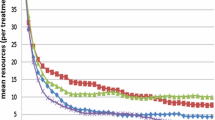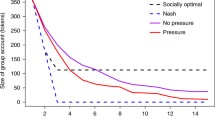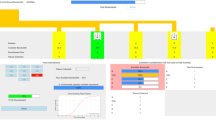Abstract
In a commons dilemma laboratory analog subjects were allowed individually to draw valuable points from a slowly regenerating pool. Subjects participated in groups of four and faced the dilemma of either rapidly drawing a large number of points for themselves (but thereby destroying the pool), or limiting their own harvesting so that the pool would regenerate, benefiting the group. All subjects were, in addition, informed of the optimum strategy for harvesting before the game began, but results showed that this strategy was rarely used. Two factors were added to the basic game: (1) dividing the resource pool into individual harvesting territories, and (2) making the varying levels of resources visible. Each of these increased the harvest and production of the resource, but only territoriality increased the supply. Only when both factors were applied together did the groups approach the optimal harvesting strategy earlier spelled out to them. Possible mediating variables and applications are discussed.
Similar content being viewed by others
References
Acheson, J. M. (1975). The lobster fiefs: Economic and ecological effects of territoriality in the Maine lobster industry.Human Ecology 3: 183–207.
Bakker, C. B., and Bakker-Rabdau, M. K. (1973).No Trespassing; Explorations in Human Territoriality. Chandler and Sharp, San Francisco.
Brechner, K. (1977). An experimental analysis of social traps.Journal of Experimental Social Psychology 13: 552–564.
Brower, S. N. (1965). Territoriality, exterior spaces, the signs we learn to read.Landscape 15: 9–12.
Dawes, R. M., McTavish, J., and Shaklee, H. (1977). Behavior, communication, and assumptions about other people's behavior in a commons dilemma situation.Journal of Personality and Social Psychology 35: 1–11.
Edney, J. J. (1975). Territoriality and control: A field experiment.Journal of Personality and Social Psychology 31: 1108–1115.
Edney, J. J. (1976). Human territories: Comment on functional properties.Environment and Behavior 8: 31–47.
Edney, J. J., and Harper, C. S. (1978). The effects of information in a resource management problem: A social trap analog.Human Ecology 6: 387–395.
Goffman, E. (1963).Behavior in Public Places: Notes on the Social Organization of Gatherings. The Free Press, New York.
Goffman, E. (1971).Relations in Public. Harper and Row, New York.
Greenhouse, S. W., and Geisser, S. (1959). On methods in the analysis of profile data.Psychometrika 24: 95–112.
Hardin, G. (1968). The tragedy of the commons.Science 162: 1243–1248.
Hayes, S. C. and Cone, J. D. (1977). Reducing residential electrical energy use: Payments, information, and feedback.Journal of Applied Behavior Analysis 10: 425–435.
Jerdee, T. H., and Rosen, B. (1974). Effects of opportunity to communicate and visibility of individual decisions on behavior in the common interest.Journal of Applied Psychology 59: 712–716.
Jowett, B. (1885) (trans.).The Politics of Aristotle, Vol. 1. Clarendon, London.
Kelley, H. H., Condry, J. C., Jr., Dahlke, A. E., and Hill, A. H. (1965). Collective behavior in a simulated panic situation.Journal of Experimental Social Psychology 1: 20–54.
Kohlenberg, R., Phillips, T., and Proctor, W. (1976). A behavioral analysis of peaking in residential consumers.Journal of Applied Behavior Analysis 9: 13–18.
Latane, B., and Darley, J. (1970).The Unresponsive Bystander: Why Doesn't He Help? Appleton-Century-Crofts, New York.
Lyman, S. M., and Scott, M. B. (1967). Territoriality: A neglected sociological dimension.Social Problems 15: 236–249.
Meadows, D. H., Meadows, D. L., Randers, J., and Behrens, W. W. (1972).The Limits to Growth. New American Library, New York.
Mintz, A. (1951). Non-adaptive group behavior.Journal of Abnormal and Social Psychology 46: 150–159.
Palmer, M. H., Lloyd, M. E., and Lloyd, K. E. (1977). An experimental analysis of electricity conservation procedures.Journal of Applied Behavior Analysis 10: 665–672.
Pastalan, L. A. (1970). Privacy as an expression of human territoriality. In Pastalan, L. A., and Carson, D. H. (eds.),Spatial Behavior of Older People. University of Michigan Institute of Gerontology, Ann Arbor.
Platt, J. (1973). Social traps.American Psychologist 28: 641–651.
Proshansky, H. M., Ittleson, W. H., and Rivlin, L. G. Freedom of choice and behavior in a physical setting. In Proshansky, H. M., Ittleson, W. H., and Rivlin, L. G. (eds.),Environmental Psychology: Man and His Physical Setting. Holt, Rinehart and Winston, New York.
Rachlin, H. (1974). Self-control.Behaviorism 2: 94–107.
Rapoport, A. (1966).Two-Person Game Theory: The Essential Ideas. University of Michigan Press, Ann Arbor.
Roos, P. D. (1968). Jurisdiction: An ecological concept.Human Relations 21: 75–84.
Rubenstein, F. D., Watzke, G., Doktor, R. H., and Dana, J. (1975). The effect of two incentive schemes upon the conservation of shared resource by five-person groups.Organizational Behavior and Human Performance 13: 330–338.
Sommer, R. (1966). Man's proximate environment.Journal of Social Issues 22(4): 59–70.
Stern, P. C. (1976). Effect of incentives and education on resource conservation decisions in a simulated commons dilemma.Journal of Personality and Social Psychology 34: 1285–1292.
Thoresen, C. E., and Mahoney, M. J. (1974).Behavioral Self-Control. Holt, Rinehart, and Winston, New York.
Watzke, G. E., Dana, J. M., Doktor, R. H., and Rubenstein, F. D. (1972). An experimental study of individual versus group interest.Acta Sociologica 15: 366–376.
Williams, R. L., and Long, J. D. (1975).Toward a Self-Managed Life Style. Houghton-Mifflin, Boston.
Winer, B. J. (1971).Statistical Principles in Experimental Design, 2nd ed. McGraw-Hill, New York.
Wynne-Edwards, V. C. (1965). Self-regulating systems in populations of animals.Science 147: 1543–1548.
Author information
Authors and Affiliations
Additional information
This paper is based on a dissertation thesis by the first author conducted at Arizona State University entitled “Territoriality and the Tragedy of the Commons: A Social Trap Analysis.” Grateful appreciation is extended to D. Linder, R. Hershberger, S. Braver, I. Sandler, A. Betz, R. Cialdini, and E. P. Willems for their assistance and advice.
Rights and permissions
About this article
Cite this article
Cass, R.C., Edney, J.J. The commons dilemma: A simulation testing the effects of resource visibility and territorial division. Hum Ecol 6, 371–386 (1978). https://doi.org/10.1007/BF00889415
Issue Date:
DOI: https://doi.org/10.1007/BF00889415




